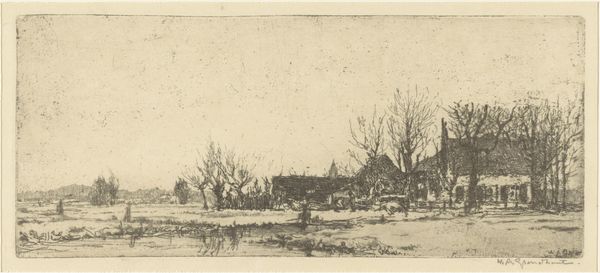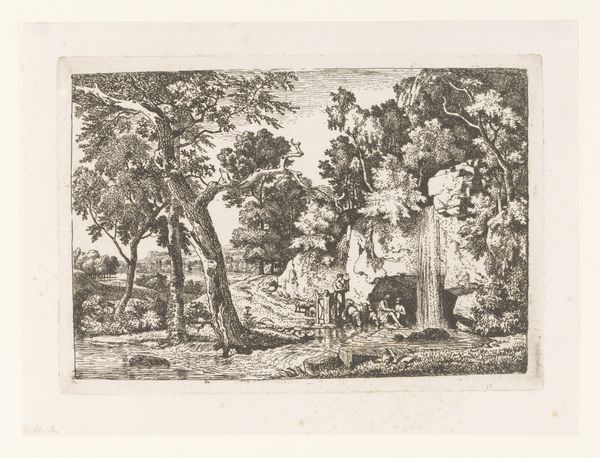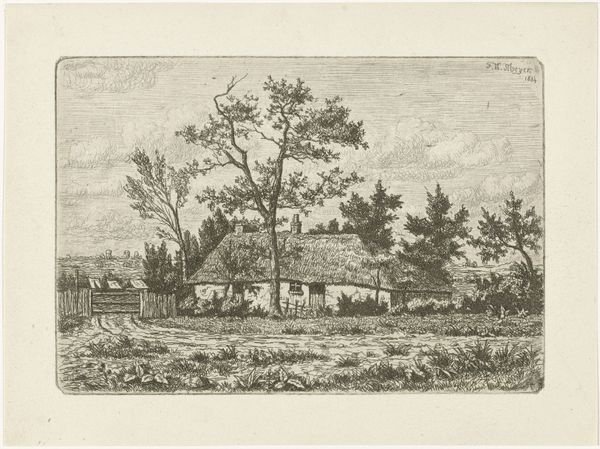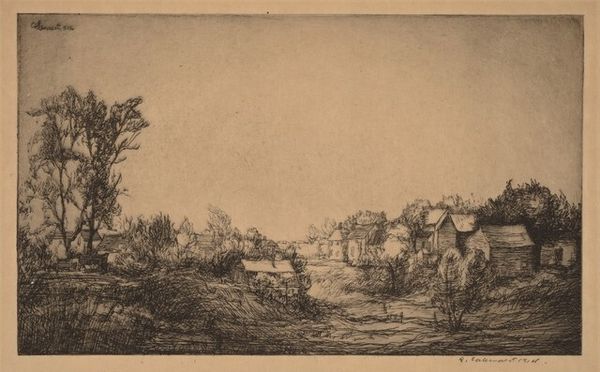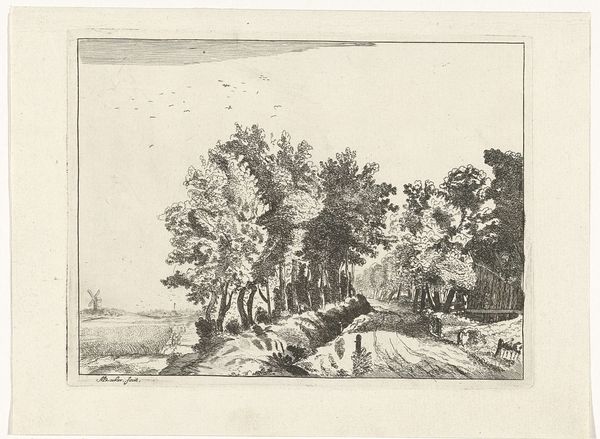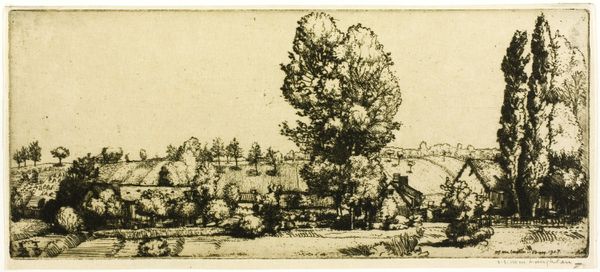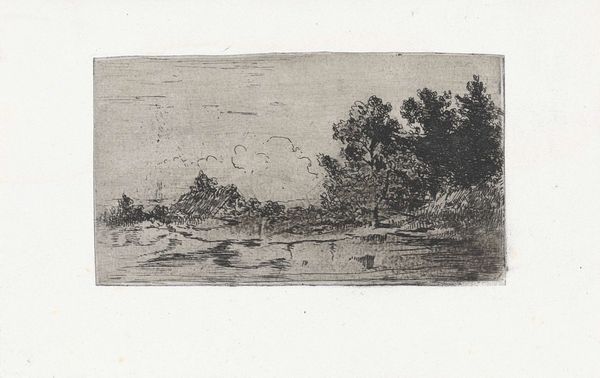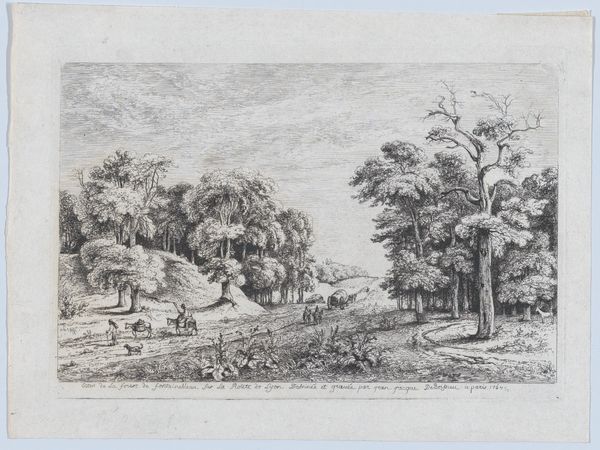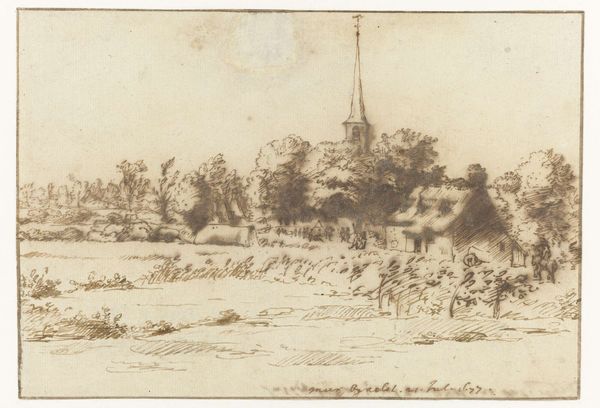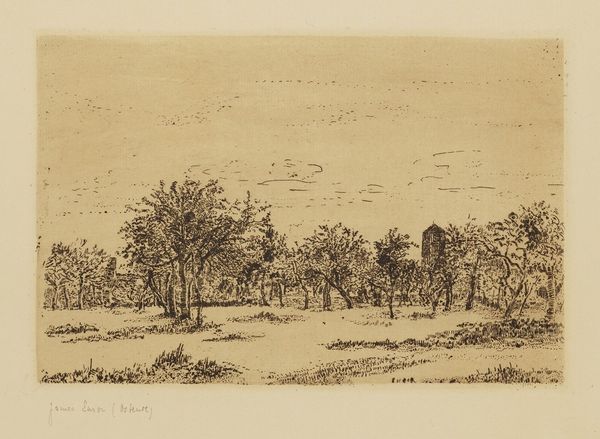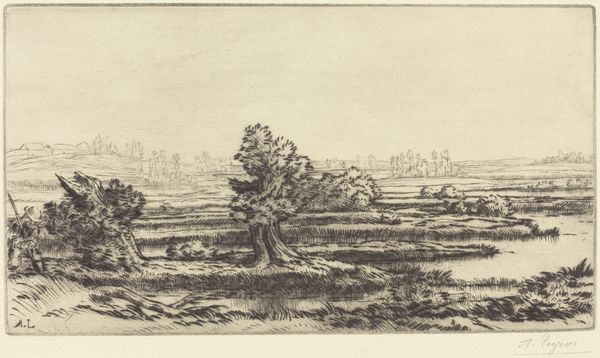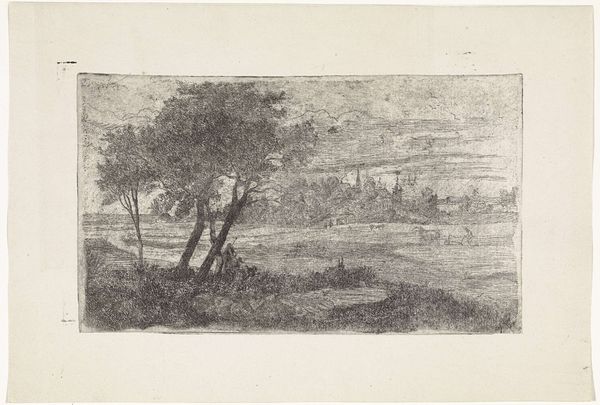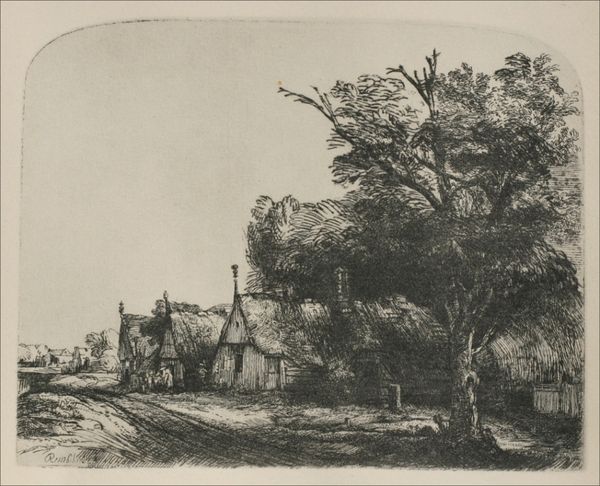
Dimensions: 119 × 278 mm (image/plate); 158 × 344 mm (sheet)
Copyright: Public Domain
Editor: So, this is "Landscape, Poigny," an etching from 1907 by Donald Shaw MacLaughlan. The scene is peaceful, rural. It looks like a memory being gently recalled. What catches your eye when you look at this print? Curator: The persistent presence of trees. Notice how they act as symbolic keepers of the land, drawing our eyes both upwards and into the depths of the landscape. The etching captures how integral nature is to cultural memory. Can you see the subtle echoes of figures even in their branches? Editor: I see what you mean. It's like the trees have witnessed generations. Are there specific symbols that stand out for you? Curator: Think about water and its relationship to reflection. Note how the artist depicts what might be a pond or stream in the foreground. Water acts as a mirror, not just for the physical world, but perhaps for the past. These watery reflections hold a symbolic weight. Does it evoke a certain stillness in you? Editor: Definitely a sense of stillness, almost meditative. And the way the buildings seem to nestle into the landscape... is that significant? Curator: Yes. The village suggests a rootedness, an intertwined relationship between humanity and nature. This harmony could reflect the social ideals of the time, a yearning for simpler life away from industrialization. Perhaps these homes and natural landscapes provide a psychological counterweight. Editor: I hadn't thought of it that way, but it makes perfect sense given the time period. It really makes me see beyond the simple landscape. Curator: Precisely. This landscape echoes a visual poem about permanence, change, and the stories etched within our collective psyche. Editor: It’s amazing how much depth a simple landscape can have. Thanks for showing me that!
Comments
No comments
Be the first to comment and join the conversation on the ultimate creative platform.
